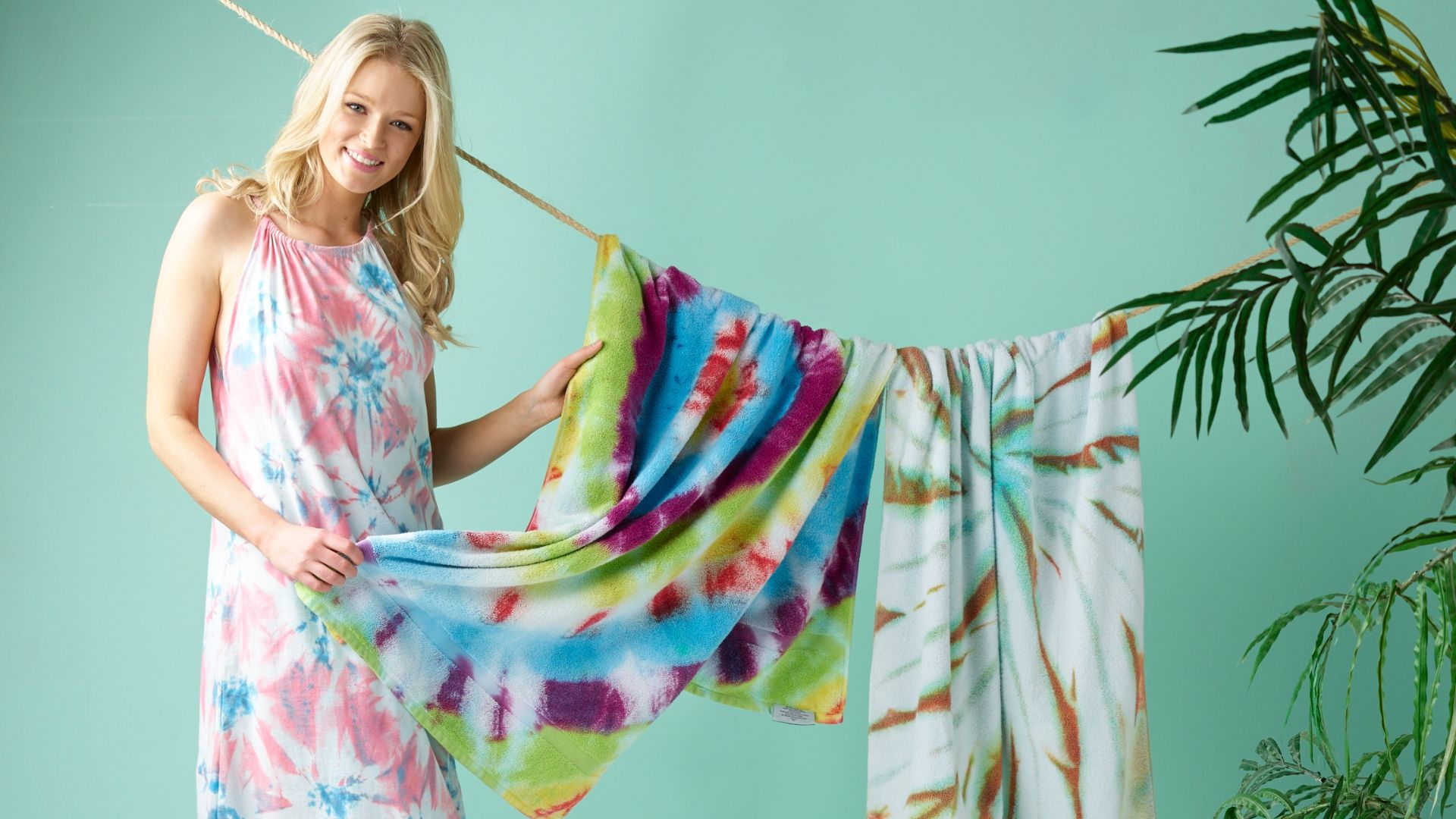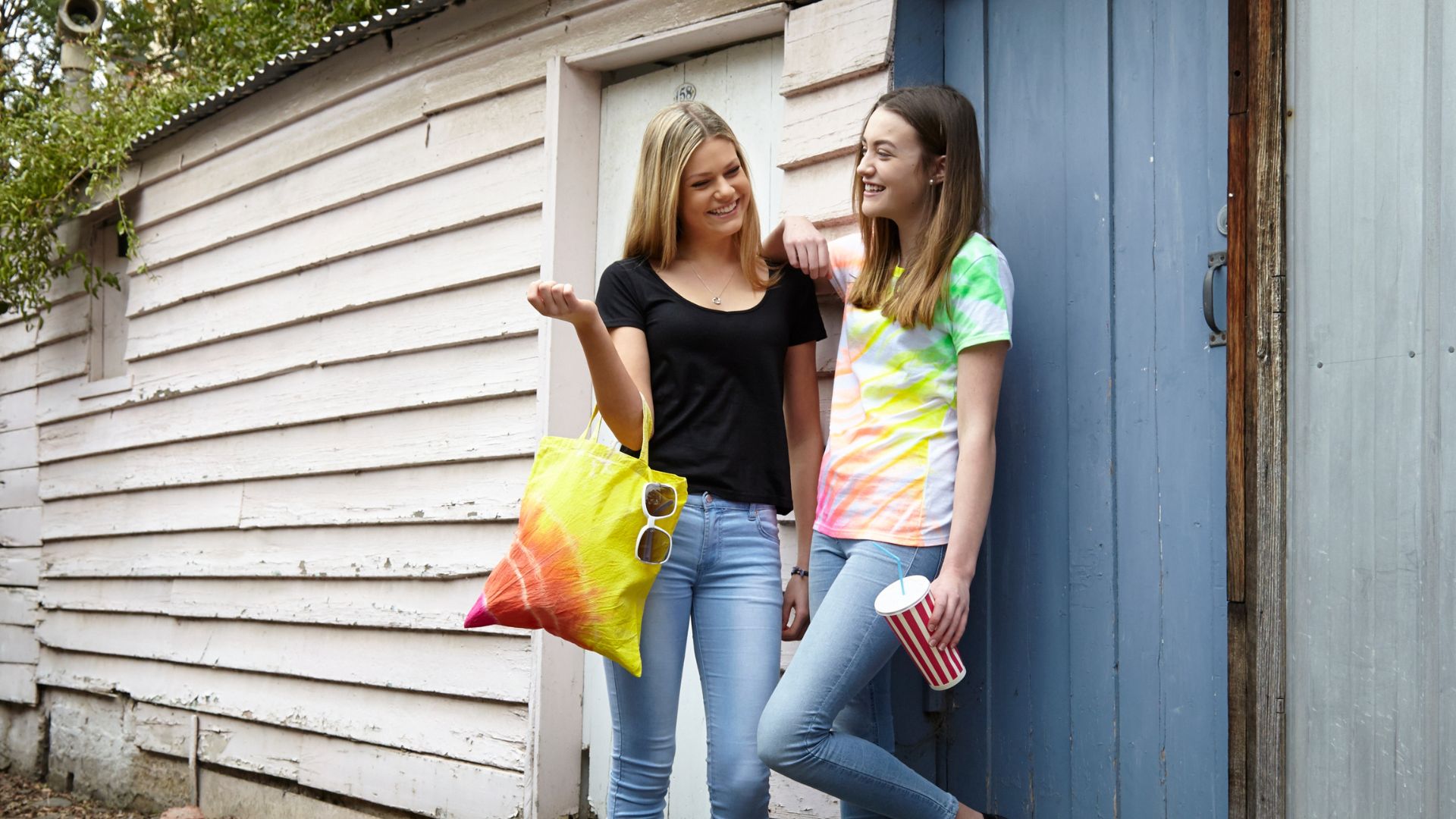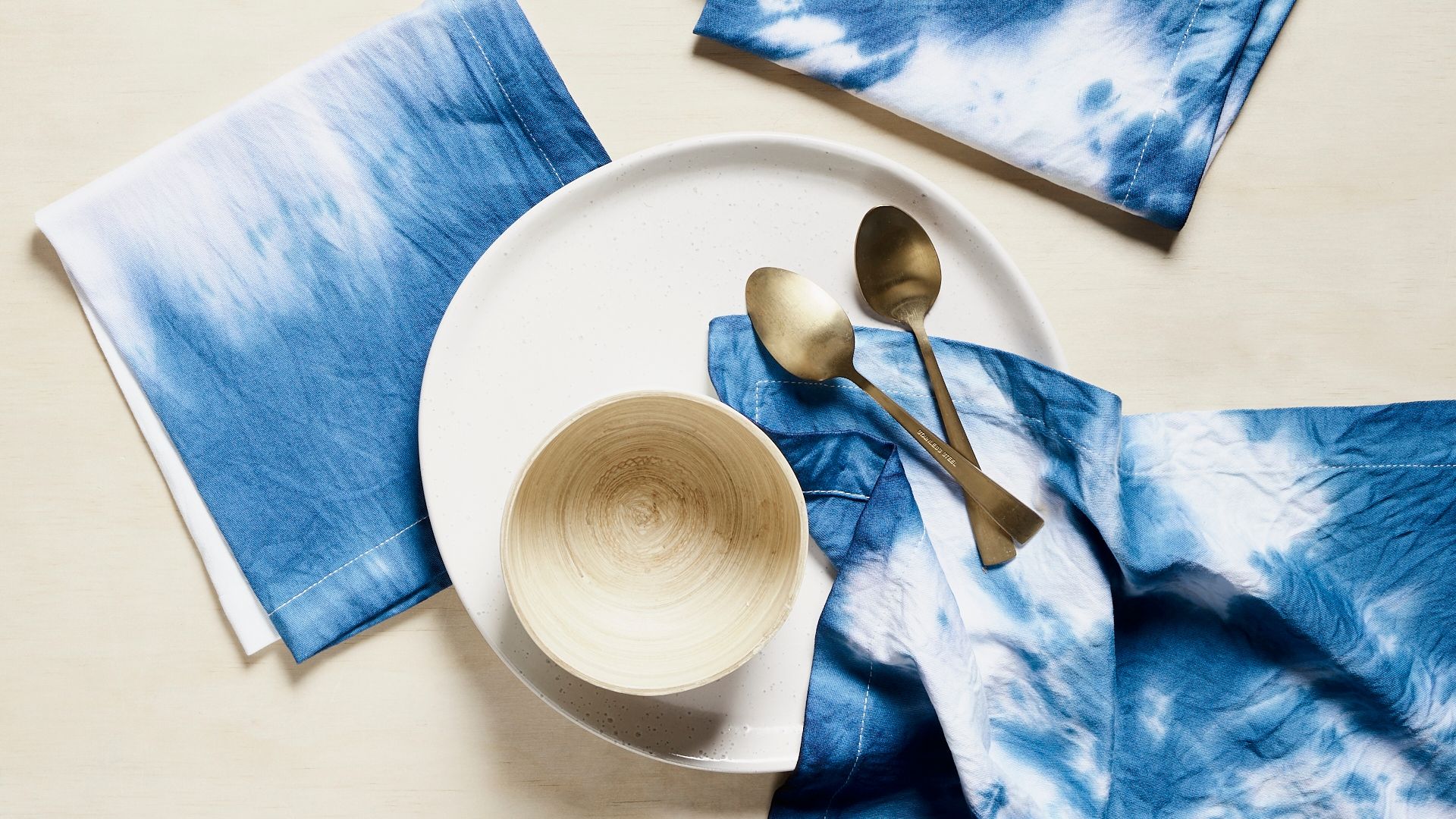 | ||
| Your browser is not supported. | ||
|
Please browse our site using any of the following options:
| ||
How to tie dye & popular tie dye techniques

If you've ever wanted to dip your toes into the colourful and whimsical world of tie dye, the art and craft specialists at Spotlight are here to show you how! Tie dye techniques can be used to dye shirts, jumpers, pants, socks, tea towels, serviettes and more in a kaleidoscope of colours and patterns, and we have everything you need to start tie dying at home.
Whether you're a beginner wondering how to do tie dye or an experienced dyer looking for helpful tips, this article has got you covered. Read on to find out everything you need to know about how to tie dye, including pattern inspiration, colour setting tips or just help on how to get tie dye off hands!
Quick Links
- What is tie dye?
- What can you tie dye?
- What do I need to start tie dying?
- How to tie dye
- How to make your tie dye clothes last
- How to get tie dye off hands and other cleaning tips
What is tie dye?
A little background on tie dye, if you're not familiar with the concept. Many cultures developed their own version of tie dye, but the one many of us are most familiar with is the colourful, psychedelic swirls made popular in the 1960s and 70s. Tie dye is a form of resist-dying, which means there are measures put into place when dying so sections of the fabric 'resist' the dye. In tie dye, those measures include twisting and bunching up the fabric and binding it with rubber bands or twine.
The ways in which the fabric is bunched will determine what kinds of patterns can be made, and dyes can be used on their own or can be enticed to mix together into new hues. By getting creative with how you manipulate your fabric and colours, you can create a unique tie dye design every time!
What can you tie dye?
Not every kind of fabric is suitable for tie dye, and certain articles of clothing will fare better than others.
Best fabric for tie dying
The best fabric for tie dying is cotton, hands down. As a natural fibre, cotton absorbs liquid dyes very well and holds its colour if washed correctly. It's also a soft and light fabric that's easy to manipulate into the shapes you need to make your designs.
You can also use denim for tie dye but look for denim that is 100% cotton, as blended fabrics won't take colour as well. Denim is a lot stiffer than regular cotton so it will be harder to twist and bunch to make a detailed pattern.
Silk absorbs colour well and is so light and fine you can create tie dye patterns with incredible detail. It is an expensive material, so save your silk fabric for a special tie dye project!
Best types of clothing to tie dye
White clothing that is loose in weave is best for tie-dye, as it will take the colour well and is easy to manipulate. T-shirts, jumpers, tracksuit pants and socks are all good candidates for tie dye. Tote bags, blankets, scrunchies and face masks can also be dyed, as long as they are made from the right material.
What do I need to start tie dying?
Now that you're ready to tie dye, here's what you'll need to get started:
- White cotton piece of clothing - we will use a t-shirt, as they're the easiest to start off with.
- Fabric dye - choose a dye designed for tie dying if you can, or pick a fabric-reactive dye that is formulated for use on natural fibres. We recommend Tulip branded kits, as the dye only needs water added to use.
- Latex or nitrile gloves - dye can be hard to get off your hands, so keep them clean with gloves.
- Wire rack - once your shirt has been dyed, rest it on a rack so the dye doesn't puddle around the fabric.
- Rubber bands - for bunching the fabric. Easier to apply and reuse than twine!
- Zip-lock bags - the dyed shirt will be resting in a sealable bag for around half a day. Cling wrap can also be used.
- Buckets or squeeze bottles - you may need a bucket to fill with dye and dip your t-shirt into. Or you can fill squeeze bottles with dye and apply colour directly to your bundled t-shirt. Check your dye packet for what it recommends!
You should also cover your workspace with a tarp or other protective cover, as you don't want to stain the floor with dye! Working outdoors is always a good option as well.
How to tie dye
Now that you have all the tie dye supplies you need, let's get started! Here are the basic steps for how to do tie dye on a white t-shirt:
- Pre-wash your t-shirt with a basic detergent. If there is any dirt or oil on the shirt when you add dye it may cause the colour to become patchy or speckled, so let's start with a clean base! Do this even if it is a new shirt, as it will minimise shrinkage the next time you wash it. Set up your workstation so everything is protected and all your supplies are within reach.
- Follow the steps to prepare the dye on the packaging of your chosen brand. If powders are involved, you may like to wear a mask to avoid inhaling any. Or it may be as simple as adding water to a bottle and shaking it!
- Dampen your shirt so it is moist all the way through but not dripping wet. This will help the dye adhere and spread. Fold, scrunch, bundle or roll up your garment according to the pattern you want, and secure it with rubber bands. We will discuss different ways to tie your clothing later on in this article.
- Apply your dye! Either dip the bundled t-shirt into a bucket or apply the dye directly using your squeeze bottles. Adding more water to the dye will create a paler, more pastel hue, and you can create new colours by adding colours side by side on the fabric and allowing them to mingle. Keep in mind which colours blend well and which will turn into a muddy mess!
- Let it drip dry for a minute on a rack, then pop the bound, damp t-shirt into a zip lock bag, squeeze all the air out and then seal it up. Place the bag somewhere sunny and warm, as this is how to set tie dye and bond the colours to the fabric. Your dye packet will have a recommended drying time, but in general you'll want to leave it for around 8 hours. Leave it for a whole day for more vibrant colours!
- Once your colours have set, take your t-shirt out of its bag but leave it banded up and rinse it under cold water. After a few minutes change the water to lukewarm and start removing the rubber bands. Continue until the water runs clear, then wash it on its own in your washing machine using a gentle detergent.
For the next few washes always wash your tie dyed t-shirt on its own, so there's no chance of the colours transferring to another garment.
Now that you know how to tie dye, start colouring different garments and see what kinds of patterns you can create!

How to bleach tie dye
Bleach tie dying is kind of like normal tie dye, but in reverse - instead of adding in colours in amazing patterns, we're taking colour away and leaving a pattern behind! Bleach tie dying is done quite similarly to traditional tie dying, and you'll need all the same things, except substitute the dye for bleach and white shirt for a coloured piece of clothing.
The colour your clothing will turn under the influence of bleach can sometimes be unexpected, so we recommend testing a little bleach somewhere inconspicuous to check before you commit to the whole process. Areas like the inside of the sleeve or collar can be good places to test. Here is how to bleach tie dye:
- Make sure your coloured t-shirt is clean. You can dampen it slightly, or start with the t-shirt perfectly dry.
- Tie the shirt up using rubber bands.
- Add the bleach via the bucket-dripping method, squeeze bottle or spray bottle. Leave your t-shirt in its bleach until you see a colour change. Bleach smells pretty strong, so you might like to wear a mask while working with it.
- Once it reaches a colour you're happy with, rinse the t-shirt in cold water and then run it on its own on a regular cycle in your washing machine to get rid of all the bleach.
Your bleach tie dye shirt is ready to wear!
Folding tie dye techniques and the patterns they produce
You can make so many dazzling patterns with tie dye, and none are particularly hard to create. Here are some of the most popular patterns and how to make them:
- Vertical stripes - lay the shirt down flat. From one side, fold the shirt across in small pleated folds, like an accordion or paper fan. Once it is all folded up in one long line, secure it with bands every 5cm or so. Apply differing dye colours on every other section.
- Sunbursts - lay the shirt down flat. Starting from the left shoulder, pinch a small section of fabric into a ball and wrap a rubber band around its base.Make more balls in a diagonal line leading down to the bottom right corner of the shirt. Colour how you like - a cool style is to use two different colours, with your line of 'sunbursts' acting as the diving line between them.
- Swirl - lay the shirt down flat and pinch a section in the very middle of the shirt. Twist the shirt around until it looks more like a sweet scroll than a shirt. Secure the t-shirt with four rubber bands, with all of them crossing over in the centre of your twisted shirt. Your bands will have formed natural wedges, like a pizza - apply different dye colours in each wedge.
- Kaleidoscope - lay the shirt down flat and fold it into quarters, with the sleeve out straight. Fold the sleeve underneath and fold the shirt into eighths, then sixteenths. It will look like a long, thin triangle. Secure it with rubber bands down the length of the triangle, then apply the dye in any pattern. When unfolded, you will have a symmetrical, mandala-like design!
- Bullseye - lay the shirt down flat and pinch a small section in the middle. Lift the shirt up and smooth the shirt into a cone shape as it dangles. Apply rubber bands down the length of the cone and apply alternating colours of dye in every other section.
- Nebula- lay the shirt down flat and then scrunch it together into a messy ball. You can scrunch small sections first and then combine them or just do one big scrunch, but when you're done, secure it with several rubber bands around the whole bundle. Apply your colours wherever you want - the result will be a galaxy of colours in a fascinating but random pattern!
Feel free to experiment and make up your own tie dye techniques to create a unique pattern on your garment!
How to make your tie dye clothes last
You've put some good effort into creating your tie dye clothing - now let's make sure they stay in good condition! Here are some handy tips on tie dye clothing care:
- After you rinse out your excess dye the first time, soak the dyed clothing in an equal mixture of cold water and vinegar. It will help your colours stay bright after a proper wash!
- Stick to colour-safe laundry detergent to help keep your colours strong and in place.
- Try to stick to drying your tie dye clothing on the line, as the heat from tumble drying can cause your colours to fade.

How to get tie dye off hands and other cleaning tips
While the dyes we're using are fantastic at colouring your clothes, sometimes that dye can work a little too well and stain our hands! While we always recommend wearing protective gloves, accidents can happen and our hands can become stained. Here are some quick and easy ways to get tie dye off hands and clothes:
- If you notice the dye on your hands straight away, wash them in your sink using warm water and soap. If you act before the dye has time to set, it will come off a lot easier!
- For stubborn dye stains on skin, mix a little baking soda into a small amount of water to make a paste and scrub that paste into the offending stain. Be aware that this may irritate sensitive skin, so test it on a small patch first if you are worried you might have a reaction.
- Coconut or olive oil are good options for those with sensitive skin. Massage some of the oil into the stain, then remove it with a cleanser - the dye should come off with the oil.
- If you have spilled some tie dye on clothes you don't want coloured, blot at the stain using paper towel or cotton balls to absorb as much of the dye as you can. Then run the stain under cold water. This will help flush out the remaining dye, but be sure to use cold water, as hot water will help set the dye instead!
Find tie dye supplies at Spotlight
Tie dye is a super fun activity the whole family can enjoy together, and at Spotlight we have everything you need to start your journey into the wonderful world of tie dye! You can find our range of fabric dyes online, or head to your local Spotlight store and our team will help you find the right fabric dyes for your project.
Need some inspiration for your first tie dye project? Check out our create blog and craft projects online, including this Tulip Tie Dye Kit project, for great inspiration!




